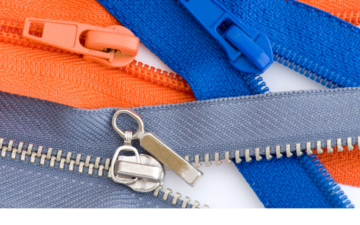How to Sew with Knit Fabrics: Top Tips for Beginners
I still remember the first time I tried to sew with knit fabric on my sewing machine. It was a disaster! This was way before YouTube and being able to go to Facebook groups for help. I sat and cried for a bit and then I called my mommy! Having a mom that's a professional tailor does have its perks. After regaining my composure and pulling out some test fabric I was ready to go. In this post I'll share my top tips to make sewing with knits easy.
What is Knit Fabric?
Knit fabric is a fabric that is "knitted" instead of woven. The fabric fibers are actually looped together instead of woven. These lopped fibers allow Knit fabric to stretch in all directions. unlike woven fabric that has very little give in any direction. When choosing a knit fabric make sure you refer to the pattern for the specific stretch and type of knit fabric. Find out more about choosing a fabric.
What Type of Thread to Use
When I'm using my serger I use regular serger thread. When I'm using my sewing machine I go with either 100% polyester or a blend. The reason is the polyester thread or polyblend have a more "give" than 100% cotton thread.
What Type of Sewing Machine Needle to Use
This is a BIG one! You do not want to sew knit fabric with a universal needle. You need a needle that has a dull point. Look for a needle that is marked for jersey or stretch. The dull tip on the needle allows the tip of the needle to go down through the fiber instead of puncturing or tearing the fabric.
What Type of Stitch to Use
If you are using a traditional sewing machine instead of a serger you will need a stitch that has the ability to give as the fabric stretches. If you use a regular straight stitch you will find that as the fabric stitches the seams will pop!
Check your machine for a stretch stitch. It often looks like a lightning bolt or a thing zig-zag stitch. This stitch has a lot of give and is made for knit or stretch fabric. If your machine does not have a stretch stitch you can use a zig-zag stitch that is narrow. As always test the stitch out of a scrap piece of fabric before you begin sewing. These stitches do not sew as fast as a traditional straight stitch so be patient and take your time.
Sewing Machine Settings
Along with changing your stitch, you may need to make a few other machine setting adjustments. Again, this is where your test strip comes in handy.
Tension: When using light to medium weight knit fabric you may need to adjust your tension u to 4-5. With more stable knits you'll find a tension around 3-4 works well.
Stitch Length: A longer stitch length will cause less warp on a knit fabric with topstitching. For your zig-zag stitch, a 1.5-2 will help ensure that the fabric doesn't pucker.
Stitch Width: This will depend on the fabric and you'll need to make adjustments. I usually go with the auto setting on my stretch stitch which is around 3.
Serger
A serger is a special sewing machine that will serger (sews together) trim, and finish the edge of the fabric all in one step. I usually use a 4 thread overlock stitch on my serger when I'm using knit fabric.
If you're looking for videos specific to using a serger we have a growing playlist on our YouTube channel. Sewing With A Serger
Practice
Like anything the more time, you spend practicing the easier sewing with knits gets. Start off with a simple project like a skirt then slowly build up to projects that take more skill.
Are you ready to conquer your serger? Then our serger 101 course is for you!
If you have any questions that I didn't cover about sewing with knit fabric let me know!
This post has been sitting in draft mode for about a year! A big thank you to Patricia B. for the push to finish it up!










hollysbirdnest.com
Great video..I have been wanting to get a serger.. thank you!
Kristen
Your website is so helpful to me, a sewing-learner. Thank you for sharing!!!
Kelly Horton
I have not seen on knits yet. Seems daunting but I'm ready to try. Do I need to have a machine with an adjustable pressure foot tension?
Margaret
a machine with an adjustable pressure foot tension is not needed. Just make sure you use the correct needle and stitch. 🙂